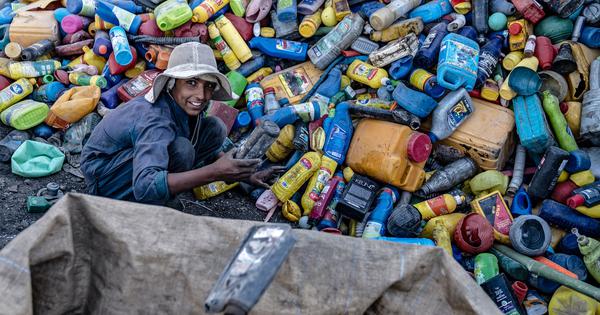Exploring the challenges and limitations of achieving a true circular economy in practice.
The reliance on virgin resources is on the rise, even as the use of ‘secondary’ materials like recycled plastic and reclaimed wood is declining. This trend raises important questions about the effectiveness of the circular economy concept, which advocates for reusing, repairing, and recycling materials instead of following a linear “take-make-waste” model. Despite an increasing enthusiasm for a circular lifestyle, the reality suggests that society is moving backward in its sustainability efforts.
Over the past decade, the idea of a circular economy has gained traction, inspiring many to strive for a zero-waste lifestyle. This approach is considered a fundamental aspect of the broader transition to achieving net-zero emissions. However, the production of oil-based plastics continues to generate significant waste and carbon emissions, complicating progress toward sustainability.
The latest Circularity Gap report underscores this disheartening trend, revealing that the use of secondary materials is decreasing, while reliance on virgin resources increases. This paradox raises critical questions about why, despite the enthusiasm surrounding the circular economy, meaningful progress remains elusive.
Research indicates that two contrasting narratives hinder progress. One narrative presents an optimistic vision, suggesting that with innovation, waste can be eliminated and ecosystems regenerated while simultaneously growing the economy. The other narrative is more pessimistic, focusing on obstacles such as high costs, consumer resistance, and insufficient government support, concluding that meaningful change is unrealistic. This dichotomy leaves many individuals feeling trapped between an idealistic vision and a sense of paralysis.
Three primary reasons contribute to the struggle for adopting circular lifestyles: excessive discussion without enough support, and the inherent limits imposed by physics. While many consumers embrace the concept of circularity in theory, they often hesitate to change their consumption habits. The simplicity of the concept can be appealing, yet its practical implementation is complex. For instance, in the UK, the One Bin to Rule Them All initiative aimed to streamline plastic waste collection but faced skepticism from industry representatives who deemed it disconnected from everyday realities.
Furthermore, some fashion brands have started to collect clothing for recycling, yet the necessary support systems are often lacking. Items collected for recycling frequently cannot be processed due to difficulties in identifying materials. To enhance recycling efforts, product labels would need to provide clear information on material composition, but many brands have been slow to adopt this transparency.
Shifting consumer habits also play a role in hindering waste reduction efforts. For example, after the UK introduced a charge for single-use plastic bags, their usage decreased. However, recent trends show a reversal, attributed to the rise in online grocery shopping and food delivery, which has led to a decreased commitment to reducing plastic waste.
Ultimately, the challenges of circularity are rooted in the laws of physics. The assumption that materials can be reused indefinitely without degradation is unrealistic. While terms like “upcycling” may sound appealing, many products cannot maintain their quality indefinitely. As such, while it is possible to slow material degradation, eliminating it entirely is not feasible.
Moving forward requires a shift from discussion to action. Consumers must not only choose recycled or refurbished products when convenient but also critically assess their daily purchases for repairability and recyclability. Government and industry support will be vital in helping consumers make informed decisions. Realistic expectations about the capabilities of circularity are also necessary, as items cannot be recycled indefinitely. Nonetheless, incremental steps toward reducing waste can lead to significant long-term impact. Ultimately, the goal of circularity should focus on consistent progress rather than perfection.








